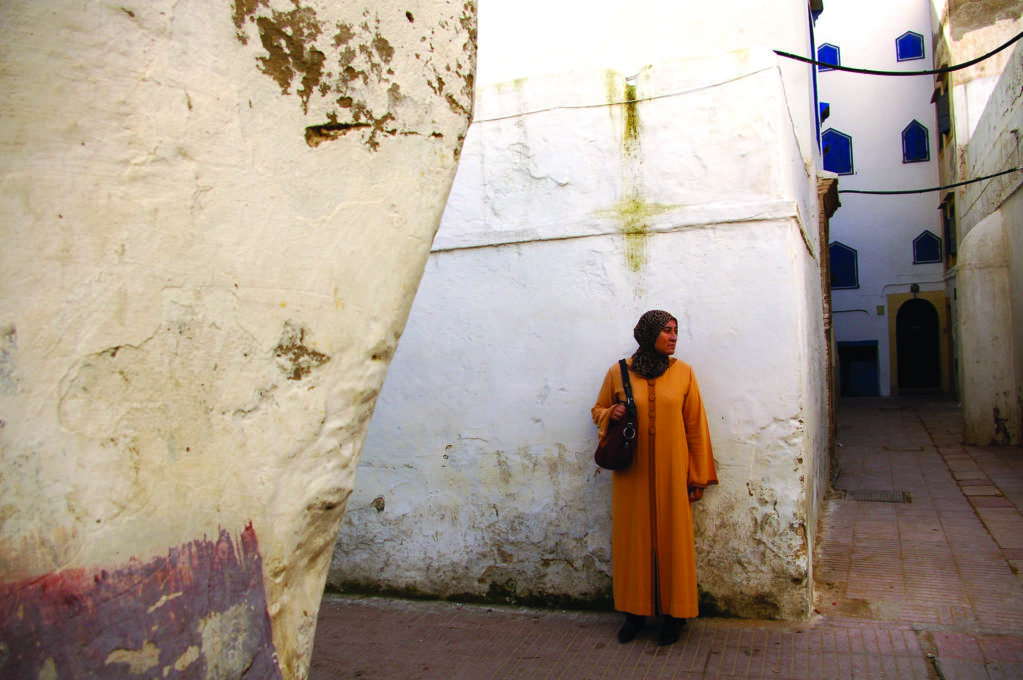I have always been intrigued by sub-Saharan trade. In the interest of understanding caravan journeys better, I made trips to Mali and Morocco to observe their most famous routes. Goods such as gold, ivory – and regretfully, millions of slaves – were moved from sub-Saharan Africa to Timbuktu, then through the desert and over the Atlas mountains to Marrakech and onto the port of Essaouira, which served as Morocco’s principal port, offering the cargo of the caravans to the world.

My journey from Casablanca airport to Essaouira was a 400-kilometer ride that passed along the Atlantic sea coast and then inland along plateaus dotted with argan trees endemic to the region and known the world over for its use in producing aromatic oil. It was late in the night when I arrived in Essaouira, an Arabic/Berber medina contained within a European fortress with winding alleys and streets. Finding my seafront hotel was an adventure in itself, in a town with many dead-end alleyways.

It was a moment of great excitement when I opened my windows, illuminated by the Maghreb sunlight, and realized my room was right on top of the ramparts of the fort overlooking a broad seafront. Later, while walking along the crenellated ramparts of the cannon-lined fort, I could see the city wake up on one side while the finest fisheries off the waters of Morocco were coming alive with boats and attendant gulls on the other. Upon reaching the port, I caught a glimpse of the lives of fishermen who were unloading their large catches of sardines and conger eels; a haul big enough to sustain its economy.
Loading...
The historic charm of the UNESCO World Heritage listed city is evident in every twist and turn in the maze of pedestrian-only streets that make up the medina. Broken facades and decorative doors open to reveal ancient Kasbahs lined with courtyards and fountains. Essaouira has been in existence in recorded history since the days of imperial Rome, where the purple stripes of the senatorial toga (garment of ancient Rome) came from a dye factory, made from sea snails found here. Ruled by Romans and then by Berber kings, it was swept up under the influence of Islam in the eighth century and ruled by Arab kings until the Portuguese captured it in the 16th century. This was followed by French occupation and it finally came under Moroccan rulers in 1777 when it was declared an independent nation.
This rich history of occupation has provided Essaouira with a French-designed fortress, Genoese-designed port citadels, a classic Arabic medina complete with a royal Kasbah, Jewish mella or quarter and a European enclave.
Walking through its winding streets I could see Arabic, French and Spanish influences in the architecture.
Essaouira’s real beginning as an import-export center came in the 1770s when the sultan of Morocco appointed families from Casablanca, Marrakech and other northern cities to settle here and become official royal traders to conduct trade with Europe and the Americas. It has been noted that seven of the town’s leading families in the 19th century were Muslim, while 25 were Jews, who once comprised 40% of the population.

The homes of former Jewish traders and the synagogue reveal themselves through Hebrew carvings on the door lintels.
The souk area was quite interesting with many shops selling spices, wood carvings and cabinetry. Unlike the bustle found in the souks of Marrakesh, the pace here was very relaxed under the warm sunlight and a steady breeze from the ocean. The fort area has more upscale shops while the souks had a classic Arabic atmosphere. The delicious seafood available in restaurants around the harbor was absolutely amazing and at very reasonable prices. I found men here wearing the classic djellabas and women walking around in colorful qmis (long jacket) covering their baggy pants.
Essaouira is best reached from Marrakesh by road and can be covered as a day trip. Emirates Airline can fly one to Morocco from any big African city via Dubai.
With its unspoilt beaches, luxurious hotels, wonderful cafes and seafood restaurants, Essaouira is fast becoming a must-visit destination. Morocco has a lot to offer. In this context, Essaouira is often ignored. But for the intrepid traveler, it offers a special place where the caravans of the Sahara finally emptied its wares for the world to consume.
Loading...
